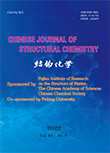Theoretical Measurements of Quantitative Effects Caused by Spectator Ligands on Palladium-catalyzed C−H Activation
MA Xiao-Si, ZHOU Yong-Zhu* and ZHANG Lei*
Chin. J. Struct. Chem. 2022, 41, 2203019-2203029 DOI: 10.14102/j.cnki.0254-5861.2011-3286
March 15, 2022
C−H activation, ligand effect, palladium catalyst, reaction mechanism, DFT calculation
ABSTRACT
Ligands can definitely
influence C−H activation at the metal center. A ligand not directly
participating in the reaction is called a spectator ligand. We attempt to
quantitatively characterize the effects of diverse spectator ligands on C−H
activation at palladium. We designed a model palladium catalyst and selected an
array of spectator ligands, such as methoxyl, amide, methyl, phenyl, cyanide,
fluorine, chlorine, and several neutral ligands, and performed density
functional theory calculations on the mechanism and energetics of C−H
activation reactions of benzene with different catalysts. Univalent ligands have
substantially larger effects than neutral ligands, and strongly σ-donating ligands (e.g., methyl and phenyl) severely hinder the C−H activation in
progress. A ligand trans to the
reaction site influences C−H activation more than that cis to the reaction site, indicating electronic effects to be at
work. For example, the existence of a methyl ligand raises the barrier height
of C−H activation by 6.4 or 14.4 kcal/mol when it is placed at the position cis or trans to the C−H activation site. The effects of poorly σ-donating ligands are not significant
and similar to those of the κ1-acetate
ligand. Some σ-donating and π-accepting ligands, such as cyanide and
isonitrile, hinder the C−H activation trans to them but appear to facilitate the C−H activation cis to them. On the basis of molecular orbital analyses, a chemical
model is proposed to understand the observed ligand effects. Lastly, the
conclusions are applied to explain the plausible mechanism of the
dehydrogenative Heck coupling.








